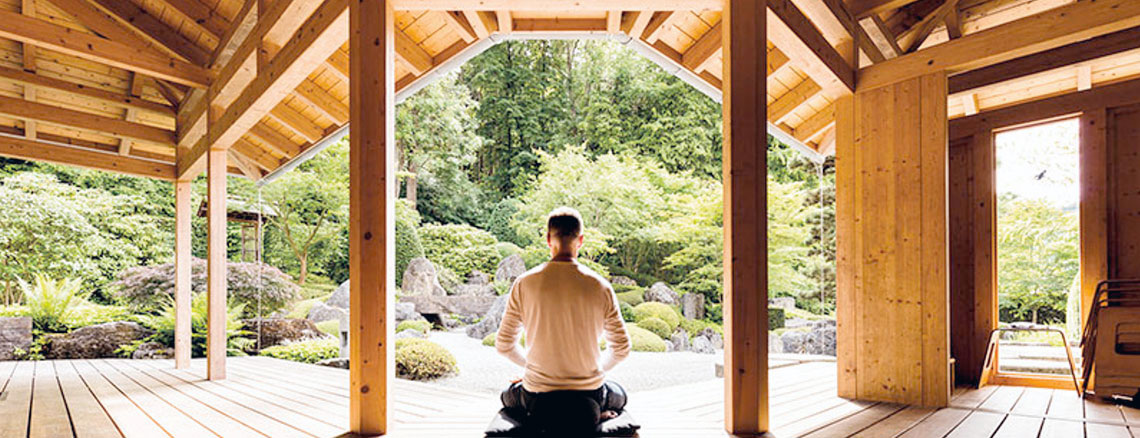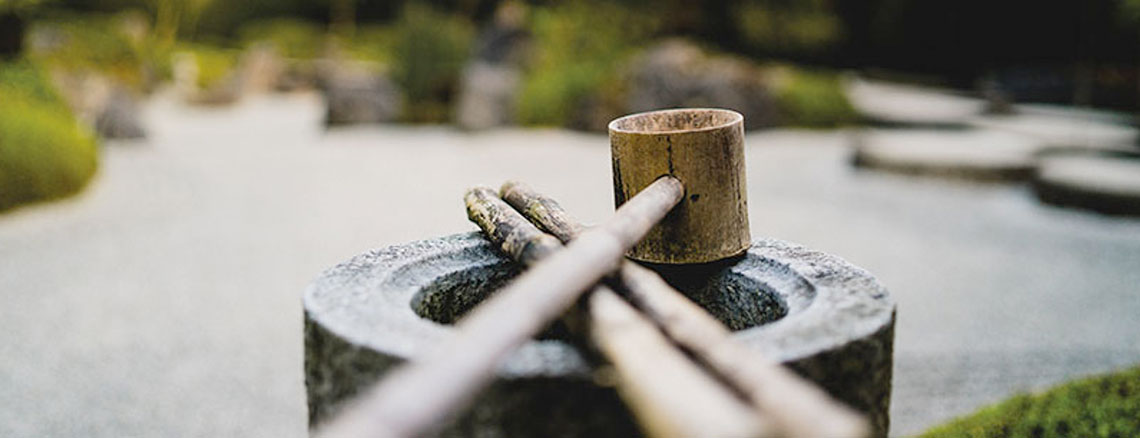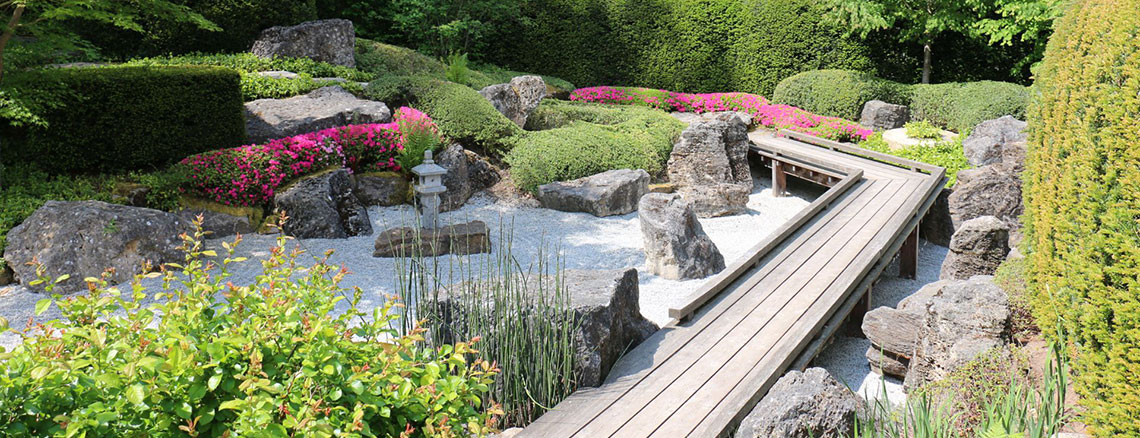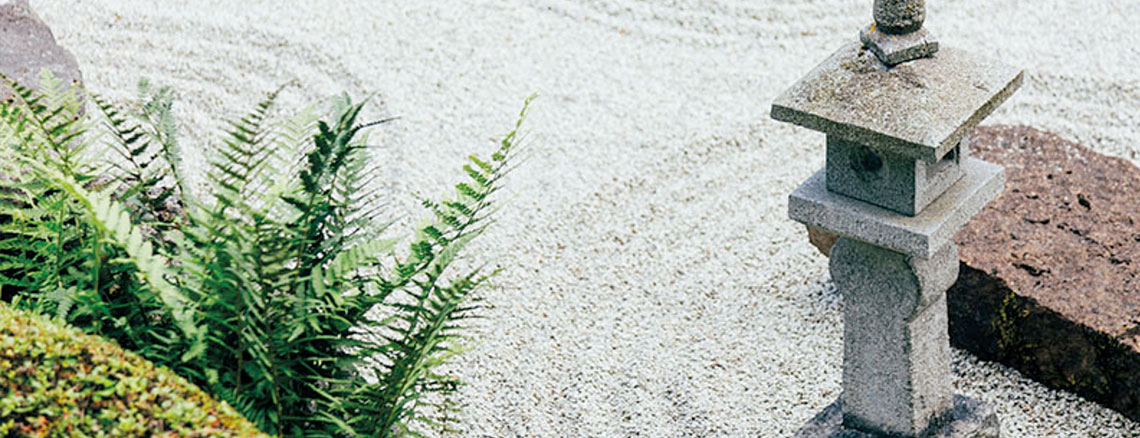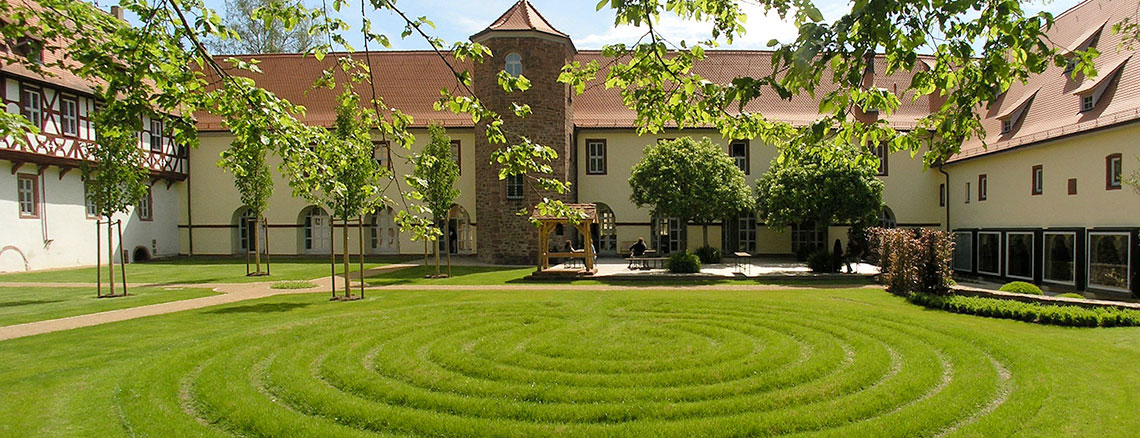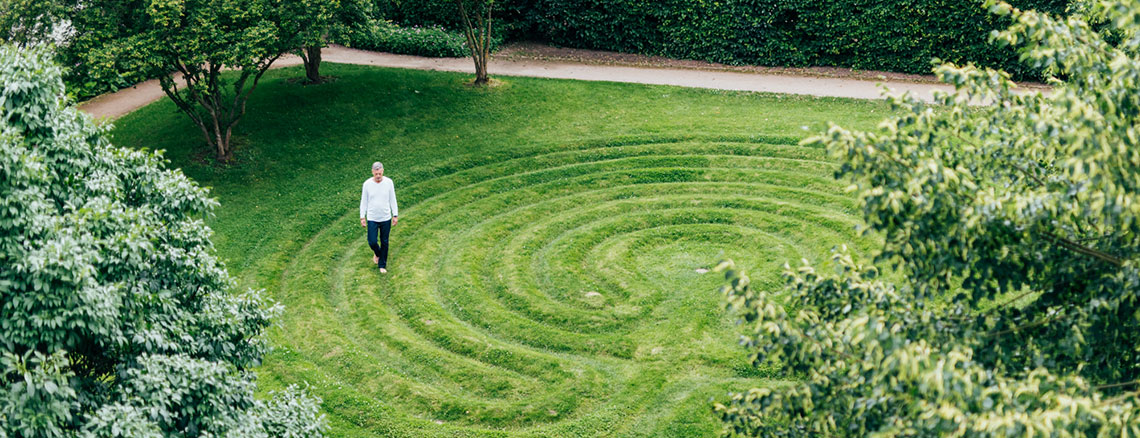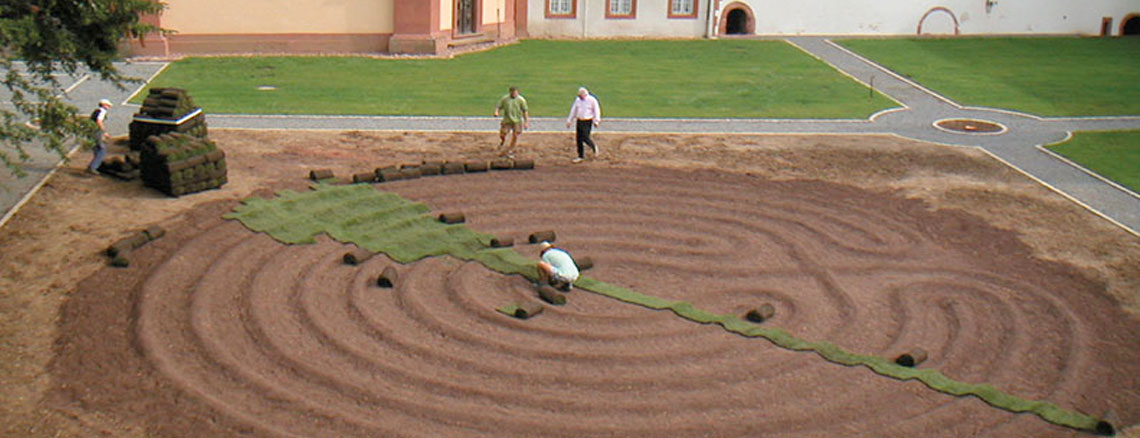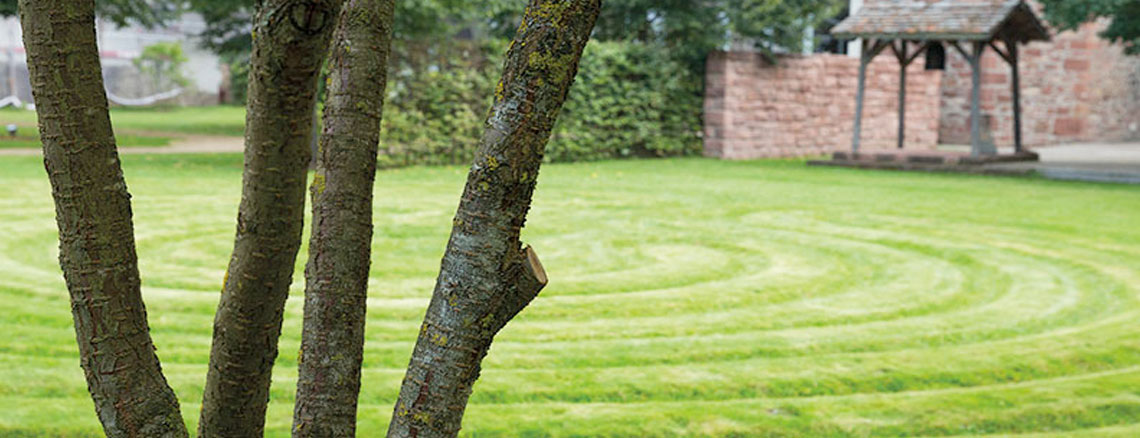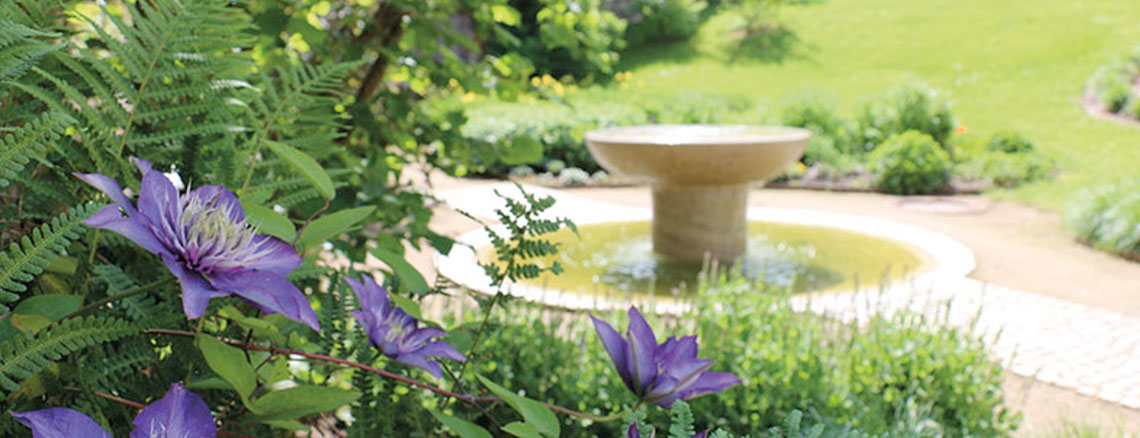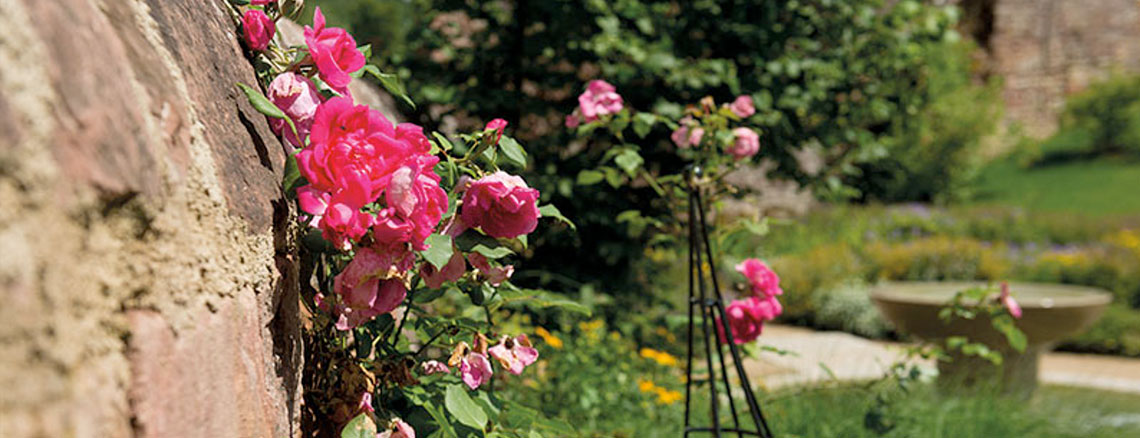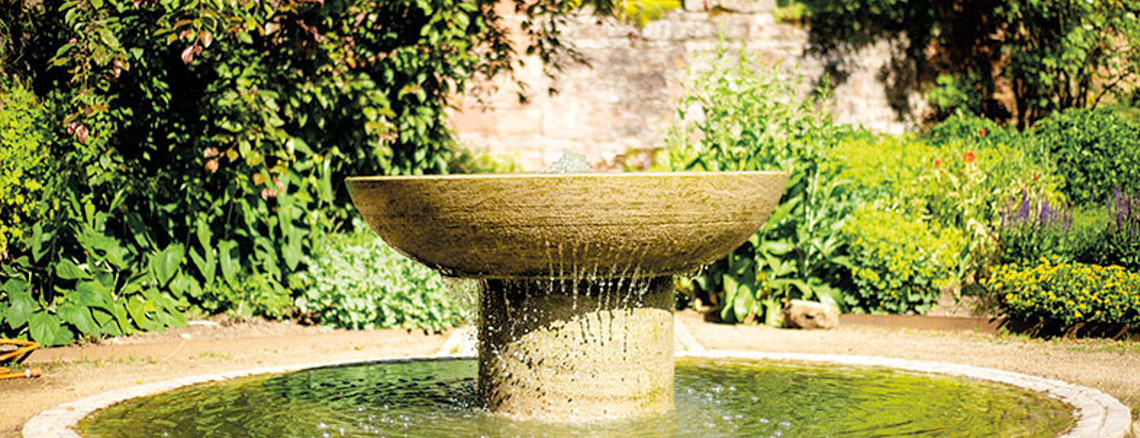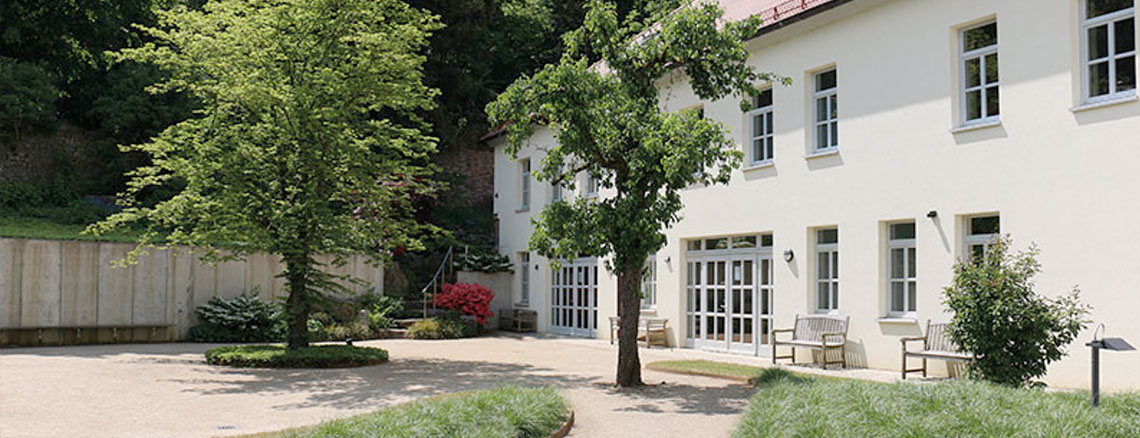Landscape Design between East and West
Within the confines of the former Benedictine monastery, a harmonious fusion of Christian Contemplation and Zen is fostered. The contemplative ideals of these two ancient practices are mirrored and embodied in the landscape design of Benediktushof. The surrounding grounds have been intentionally designed in a cross formation that encompasses the former cloister and the present-day meditation hall, known as the Zendo.
As such, the waterways and gardens follow these perpendicular axes, further reinforcing the overall symmetry of the grounds. Benediktushof has artfully integrated several different garden styles, each one of them serving to elicit and express the profound essence of stillness that is so conducive to the meditative arts of mindfulness and contemplation.
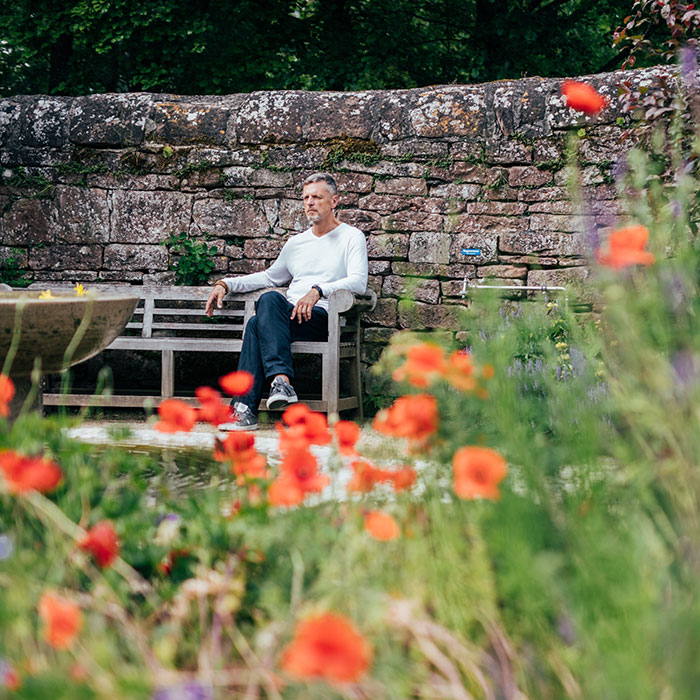
Our Zen-garden
The garden of the hidden well
The completion of the Japanese-inspired Zen garden at Benediktushof has brought to life a previously overlooked portion of the former monastery grounds. Designed by the renowned landscape desginer Friedhelm Hellenkamp the garden was ceremoniously unveiled in June of 2009.
Set against the picturesque backdrop of the monastery’s partially collapsed wall, the garden’s sloping terrain, and the dense, brooding canopy of the surrounding forest with its stately deciduous trees, this space seems almost preordained to serve as a tranquil, contemplative retreat that fully integrates the natural landscape into its design. By drawing upon the surrounding terrain as a source of inspiration and incorporating it as a central component of the garden’s aesthetic, the Zen garden at Benediktushof provides visitors with an immersive, reflective experience that is at once peaceful, meditative, and deeply spiritual.
The garden style used here originates from the monastery gardens of ancient Japan. It first appeared in the 14th century and its particularity is to represent both the sea and waterfalls through fine gravel. This revolutionary idea reached its peak in the highly abstract designs of the meditation gardens of Ryoan-Ji and Daisen-In in Kyoto. The garden at Benediktushof uses the same principle called kare-san-sui (mountain-water-landscape) in Japan. It was created to be viewed from specific points in order to be completed in our minds, much like when viewing old ink drawings.
In a Zen garden, one does not simply stroll through it; rather, they observe it with a meditative and contemplative spirit. The fundamental components of the garden, such as the boulders and pebbles, remain constant throughout the seasons, while the minimalistic greenery varies. The Japanese Zen garden aims to capture inner beauty and guide individuals in their quest for the ultimate truth that lies within themselves, buried beneath layers of distraction and illusion.
The pinnacle of this garden’s design is the magnificent waterfall, comprised of majestic mussel limestone rocks sourced from the Würzburg region. A massive stone slab serves as a bridge, guiding visitors through the garden’s pathways. The simulated flow of a river, represented by the pristine white gravel, courses through the garden and culminates at the rear entrance of the Zendo.
Through the harmonious amalgamation of Western-Christian and Far-Eastern cultural design, the Benediktushof’s Zen garden, cloister, and courtyard serve as a testament to the essence of stillness, evoking a sense of profound serenity and tranquility in those who experience its beauty.
„The color of the mountains is Buddha’s body, the sound of running water is his great speach“
(Dogen 1200 – 1253)
Labyrinth at Benediktushof
Go inwards
The lawn labyrinth at Benediktushof is a classical Knidos labyrinth with seven circuits. The labyrinth symbol is one of the oldest in human history, with a long-standing tradition of helping us understand our full humanity. On November 14, 2004, the labyrinth in the garden of Benediktushof was solemnly inaugurated by its founder, Willigis Jäger. The idea and implementation were carried out by engineer Erwin Reißmann, Beatrice Grimm, and participants.
A Symbol of Our Life’s Journey
Labyrinths are not mazes. They have a single, convoluted path that leads from the starting point to the destination as long as possible. The labyrinth serves as a metaphor for the human journey of life with its numerous changes of direction. Like the path through the labyrinth, our life path leads through many twists and turns, through painful and joyful times, until we finally reach the center of our lives. One may think they have reached their destination, only to be led out again, much like in real life.
The Exercise
When entering the labyrinth, one should be conscious of entering a sacred and timeless space. The labyrinth can aid in bringing one into stillness. Mindful walking helps to quiet the mind, much like in meditation. Everything disappears except for the path that one is walking. The labyrinth serves as a practice in staying centered with each step. The goal is not to reach the center of the labyrinth, but to find one’s own center that always exists within oneself. It invites us to trust in it and leads us to the essence of our lives.
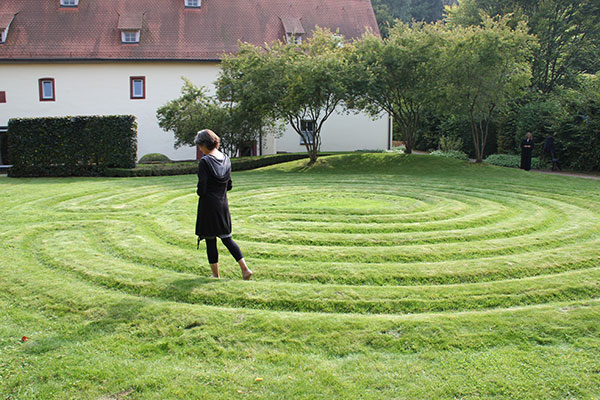
Garden of silence
After the renovation and partial reconstruction of the eastern wing of the Benediktushof in 2012, the question arose as to how the plot of land behind it should be designed. As the eastern wing mainly hosts silent retreats such as those for Christian contemplation and Zen meditation, it was logical to create a „Garden of Silence“ there. The garden is surrounded by the old monastery wall and has two levels.
On the upper level, an herb garden was created for the Benediktushof kitchen, while on the lower level, around an old cherry tree, a large round space was established. This area is used for daily walking meditations. In the rear area, there are several planting beds with seating areas around a fountain stone, where guests can retreat for a personal break. The entire garden is designed to allow for the experience of stillness and peace.



